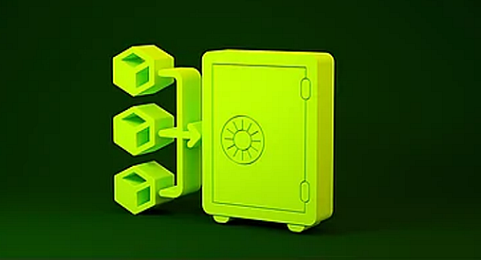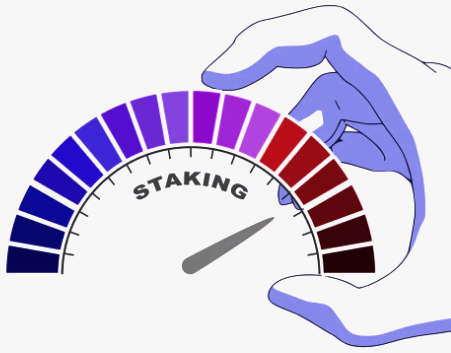Accredited InvestorsAltcoinAnatoli UnitskyAnti-Money Laundering (AML) In CryptoAPIArbitrageArtCoin TokenArticle DirectoryASICAuction Terminology GlossaryBasics of Stock Market InvestingBear MarketBest Crypto Payment Provider In the WorldBitcoinBlockchainBlockchain ConfirmationBlockchain Consensus MechanismBlockchain ForkBlockchain GlossaryBored Ape Yacht ClubBuild a Business That OutperformsBull MarketBuying SkyWay SharesByzantine Fault Tolerance (BFT) ExplainedCasascius CoinCentral Bank Digital Currency (CBDC)Centralized Crypto ExchangeCoinCoinsetCold WalletCollateralCommodity Futures Trading Commission (CFTC)Cross-Chain TechnologyCRUCrypto ExchangeCrypto GlossaryCrypto JokesCrypto Terms to KnowCrypto TickerCryptocurrencyCryptographyCryptojackingCryptounit BlockchainCryptounit GlossaryCryptounit ProgramdApp (Decentralized Application)Dead CoinDecentralized Exchange (DEX)Decentralized Finance (DeFi)Difference Between Bitcoin and EthereumDifferent Ways of Investing MoneyDigital CurrencyDistributed LedgerDo Your Own Research (DYOR)Dollar Cost Averaging (DCA)Dow Jones Industrial Average (DJIA)EncryptionERC-20ERC-721EthereumEvoScentFear Of Missing Out (FOMO)Fear, Uncertainty and Doubt (FUD)Fiat MoneyFNT Fintech CompanyGenesis BlockGlobal Unit PayGlossary of Banking TermsGlossary of Business TermsGlossary of Financial TermsHalvingHODLHot WalletHow Do I Start InvestingHow Rich is Satoshi Nakamoto?How to Create a BlockchainHow to Find Private InvestorsHow to Get Into FintechHow to Program Smart ContractsI Am Thrilled to Be a Part of This Global ProjectInitial Coin Offering (ICO)Initial Public Offering (IPO)Initial Token Offering (ITO)Innovation Basalt TechnologyInnovative Transportation TechnologiesInternational Bank Account Number (IBAN)Investing in Gold Mining StocksInvesting in Gold MiningJagerJoy of Missing Out (JOMO)Know Your Customer (KYC)LedgerLiquidity in CryptocurrencyMaker and Taker Fees in Crypto TradingMarket Capitalization (Market Cap)Meme CoinMetal Credit CardMetaMaskMillenials Now Have Access to Generational WealthMy Best Investment EverNew Digital EvolutionNFT GlossaryOff-Chain TransactionsOn-Chain TransactionsOpen Edition NFTPeer-to-Peer (P2P)Personal Loan GlossaryProbably the Best STO on the MarketProof of Stake (PoS)Real Estate Glossary of TermsReal Estate Investing GlossaryRebase TokenSecurities and Exchange Commission (SEC)Security Token ExchangesSecurity Token Offering (STO)Soulbound Decentralized Identities for Security TokensSoulbound ID Launch by Stobox Proves a SuccessSoulbound TokensStoboxStock Market GlossaryTestimonialsTether Platform and Token (USDT)UnitEx ExchangeUnitsky String TechnologiesUNTBUSDUValidatorWe Started Investing When We Were 25What are Blue Chip NFT?What are Blue Chip Stocks?What are Crypto Assets?What are Crypto Smart Contracts?What are CryptoPunks NFT?What are Digital Assets?What are Digital Collectibles?What are Gas Fees?What are Gas Wars?What are Hashmasks?What are Non Fungible Tokens?What are Non-Sufficient Funds (NSF)?What are Soulbound Tokens (SBT)?What are Stablecoins in Crypto?What are Transactions Per Second (TPS)?What are Utility NFTs?What are Utility Tokens?What Does Burning Crypto Mean?What Does Diamond Hands Mean?What Does Paper Hands Mean?What Does To The Moon Mean?What Does WAGMI Mean?What Happened to Satoshi Nakamoto?What is a 51% Attack?What is a Baby Boomer?What is a Backlink?What is a Banner?What is a Barcode?What is a Bid-Ask Spread in Crypto?What is a Block in Blockchain?What is a Block Reward?What is a Blockchain Address?What is a Blockchain Node?What is a Blockchain Oracle?What is a Blog?What is a Bond?What is a Bot?What is a Broker?What is a Business Accelerator?What is a Cash Cow?What is a Commercial Bank?What is a Commodity?What is a Con?What is a Credit?What is a Credit Limit?What is a Credit Rating?What is a Crypto Airdrop?What is a Crypto Bridge?What is a Crypto Scam?What is a Crypto Token?What is a Crypto Wallet?What is a Crypto Whale?What is a Crypto Winter?What is a Cryptocurrency Public Ledger?What is a Cryptocurrency Roadmap?What is a DAO?What is a Dark Pool?What is a Day Trader?What is a Dead Cat Bounce?What is a Default?What is a Derivative?What is a Digital Credit Card?What is a Fiscal Quarter?What is a Fungible Token?What is a Governance Token?What is a Grace Period?What is a Hard Fork?What is a Hot Wallet?What is a Hybrid Blockchain?What is a Hybrid PoW/PoS?What is a Joint Account?What is a Market Cap?What is a Merkle Tree in Blockchain?What is a Mining Farm?What is a Nonce? What is a PFP NFT?What is a POS System?What is a Prepaid Card?What is a Private Blockchain?What is a Private Key?What is a Public Blockchain?What is a Public Key?What is a Reserve Currency?What is a Ring Signature?What is a Routing Number?What is a Rug Pull in Crypto?What is a Safe Deposit Box?What is a Satoshi?What is a Security Token?What is a Seed Phrase?What is a Shitcoin?What is a Sidechain?What is a Soft Fork?What is a Spot Market?What is a State Bank?What is a SWIFT Code?What is a Tax Identification Number (TIN)?What is a Time Deposit?What is a Transaction Account?What is a Variable Interest Rate?What is a Virtual Assistant (VA)?What is a Virtual Card?What is a Virtual Currency?What is a Visa Card?What is a Whitelist in Crypto?What is a Whitepaper?What is Accounts Payable (AP)?What is AMA in Crypto?What is Amortization?What is an Accrual?What is an ACH Transfer?What is an Actuary?What is an Addendum?What is an Algorithm?What is an Angel Investor?What is an Annuity?What is an Asset?What is an ATM?What is an Atomic Swap?What is an Audit?What is an Avatar?What is an EIN?What is an Embargo?What is an Entrepreneur?What is an IDO (Initial Dex Offering)?What is an Interest Rate?What is an Internet cookie?What is an Investment Bank?What is an NFT Drop?What is an NFT Floor Price?What is an Ommer Block?What is an Orphan Block?What is an Outstanding Check?What is an Overdraft?What is Artificial Intelligence (AI)?What is B2B (Business-to-Business)?What is B2G (Business-to-Government)?What is Bartering?What is Bitcoin Dominance?What is Bitcoin Pizza Day?What is Blockchain Immutability?What is Blockchain Used For?What is BRICS?What is Business-to-Consumer (B2C)?What is C2C (Customer to Customer)?What is Capitalism?What is Catfishing?What is CFD Trading?What is Check Kiting?What is Cloud Mining?What is Communism?What is Content Marketing?What is Decentralization in Blockchain?What is DeFi in Crypto?What is Delisting?What is Depreciation?What is Digital Marketing?What is Diversification?What is Double Spending?What is Dumb Money?What is Dumping?What is Earnings Per Share (EPS)?What is Economics?What is Email Marketing?What is Equity?What is Etherscan?What is Fintech?What is Foreign currency?What is Forex?What is Fundamental Analysis (FA)?What is GameFi?What is Generative Art NFT?What is Gwei?What is Hard Currency?What is Hash Rate?What is Hashing in Blockchain?What is Inflation?What is Initial Game Offering (IGO)?What is Interest?What is Interest Income?What is Mainnet?What is Mastercard?What is Metaverse in Crypto?What is Mining in Cryptocurrency?What is Minting NFT?What is Mobile Banking?What is Money Laundering?What is NFT Alpha?What is NFT Metadata?What is NFT Rarity?What is NGMI Meaning?What is Nominal Interest Rate?What is Online Banking?What is Open-End Credit?What is OpenSea NFT Marketplace?What is Personal Identification Number (PIN)?What is Play-to-Earn?What is Polygon?What is Proof of Authority (PoA)?What is Proof of Work (PoW)?What is Public Key Cryptography?What is Pump and Dump?What is Quantum Computing?What is Refinancing?What is Retail Banking?What is Ripple?What is Sharding?What is Slippage in Crypto?What is Smart Money?What is Solvency?What is Soulbound ID?What is SSL?What is Staking in Cryptocurrency?What is Technical Analysis (TA)?What is Testnet?What is the Ask Price?What is the Better Business Bureau (BBB)?What is the Bid Price?What is the Dark Web?What is the InterPlanetary File System (IPFS)?What is the Gold Standard?What is the Lightning Network?What is the Prime Rate?What is the Sandbox?What is the Secondary Market?What is the World Bank?What is Tier 1 Capital?What is Tokenomics?What is TRC-20?What is Universal Banking?What is Unspent Transaction Output (UTXO)?What is Usury?What is Volatility in Crypto?What is Wash Trading?What is Web3?What is Whisper?What is XRP?What is Zero-Knowledge Proof (ZKP)?Who is Beeple?Who is Satoshi Nakamoto?Who is Vitalik Buterin?Why Tokenization is a Safe HavenWhy You Should Try Your Hand at Trading
Proof of Stake (PoS)
- Home
- Cryptounit Glossary
- Proof of Stake (PoS)
Since cryptocurrencies are not under a centralized authority to track transactions and balances, their underlying systems require a method for users to agree on who owns what.

Because any user can potentially attempt to modify the shared ledger of historical transactions, developers have devised methods to prevent fraud or mistakes from occurring. They accomplish this by aligning users' economic incentives around maintaining correct records. Using proof of stake is just one of the solutions.
Along with the PoS model, there are customized versions such as Leased Proof of Stake (LPoS) and Delegated Proof of Stake (DPoS) mechanisms. In addition, there are hybrid consensus systems such as Hybrid PoW/PoS, which incorporates features of both PoW and PoS models.
The Proof of Stake (PoS) system was created as an alternative to Proof of Work (PoW). Miners on PoW-based blockchains, such as Bitcoin, can only be rewarded if they find a valid solution to a cryptographic puzzle. This is what qualifies them to add the next block of transactions to the blockchain.
In contrast, blockchains that use the PoS concept reach consensus through a process that selects validators based on a number of criteria. The implementation of block selection varies, however it typically takes into account staking size and how long coins are being staked ("currency age"). In most situations, the block selection technique is a randomization mechanism, which means that validators take turns forging new blocks.
Block creators are referred to as validators in PoS. A validator verifies activities, checks transactions, votes on outcomes, and keeps records. Block creators are referred to as miners in PoW. Miners work to solve for the hash, a cryptographic number used to validate transactions. They are given a coin in exchange for solving the hash.
Security
The 51% attack, long promoted as a threat to cryptocurrency enthusiasts, is a problem when PoS is utilized, but it is unlikely to materialize. A 51% attack under PoW occurs when an entity controls more than 50% of the miners and utilizes that majority to modify the blockchain. A group or individual would need to own 51% of the staked coin in PoS.
Controlling 51% of the staked coin is prohibitively expensive. If a 51% attack occurred in Ethereum's PoS, the network's honest validators may opt to reject the altered blockchain and burn the offenders staked ETH. This encourages validators to act in good faith in order to benefit both the cryptocurrency and the network.
Most other PoS security features are not publicised, as doing so may provide an opportunity to circumvent security mechanisms. However, most PoS systems include additional security features that enhance the inherent security of blockchains and PoS algorithms.
Pros of Proof of Stake
- Energy-efficient - Proof of work has a negative reputation due to the enormous quantities of computational power and electricity that it requires. Given the increased concern about the environmental impacts of blockchains that use proof of work, such as Bitcoin, proof of stake may provide better environmental outcomes. The low energy consumption of proof of stake eliminates this problem and broadly distributes infrastructure, thus making a blockchain system more stable.
- Doesn't require special equipment to participate - Proof of stake allows more people to participate in blockchain systems as validators. To stake cryptocurrency, there is no need to purchase expensive processing devices or waste enormous quantities of electricity. You only need coins.
- Provides fast and inexpensive transaction processing.
- Staking - Investors can stake their cryptocurrency to earn rewards, generating passive income. And because proof of stake is ecologically benign, it is expected to become more popular as a consensus mechanism.
Cons of Proof of Stake
- Outsized influence - Validators with significant holdings may exert excessive influence over transaction verification.
- Security - Certain proof of stake implementations may make blockchains more vulnerable to certain types of attacks than proof of work, such as low-cost bribe attacks. The exposure to assaults reduces the overall security of the blockchain.
The Bottom Line
When considering whether to invest in a cryptocurrency, it is critical to compare proof of stake and proof of work. Even if you believe proof-of-stake cryptocurrencies are better, keep in mind that not all proof-of-stake blockchain systems are equally valuable.
As always, do your homework on the cryptocurrency project you want to support. Determine what it is trying to do and whether other solutions on the market are able to do it better.
Related Articles

What is Proof of Work (PoW)?
The first cryptocurrency consensus mechanism was proof of work. With the launch of Peercoin in 2012, an alternative, proof of stake, was introduced. It chooses transaction validators depending on...

Cryptography
Cryptographic algorithms can be classified into three categories based on key usage: symmetric encryption, asymmetric encryption, and hash functions. Each of these serve unique and...

Validator
A validator is a node in a proof-of-stake (PoS) blockchain network that is responsible for validating transactions and maintaining the integrity of the network. In a PoS blockchain, validators are chosen to...

What is a Block in Blockchain?
Orphan blocks are blocks in a blockchain that don't belong to the main chain. This happens when two miners create blocks at the same time. While they are not...

What is Staking in Cryptocurrency?
This system, known as PoS (proof of stake), is used by many blockchains to validate new transactions and add new blocks. It helps ensure that only...

What Does Burning Crypto Mean?
Proof of Burn is a consensus algorithm utilized by certain blockchains to validate transactions and ensure their validity. It serves as an alternative to the more commonly used proof of work and proof of stake algorithms.
- Home
- Cryptounit Glossary
- Proof of Stake (PoS)